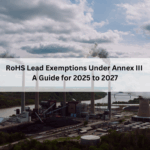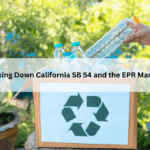Health and Safety Executive (HSE) opened a call for evidence on 4 substances and substance groups. These 4 substances have recently been identified as SVHCs by the EU.
HSE and Environment Agency, is preparing Risk Management Option Analysis (RMOAs) for the substances and substance groups below.
To inform these RMOAs, HSE has opened calls for evidence. They also invited interested parties to respond with general information and information on specific topics.
- DOTL: All dioctyltin dialurate, stannane, dioctyl-, bis(coco acyloxy) derivatives, as well as all other stannane, dioctyl-, bis(fatty acyloxy) derivatives. wherein C12 is the predominant carbon number of the fatty acyloxy moiety.The common CAS numbers are 3648-18-8 and 91648-39-4 derivaties.
DOTL is used as a catalyst in the manufacture of a variety of polyurethane applications, varnish and powder coatings and sealants. DOTL based products are also used to catalyze processes for manufacturing polyester polyols and other polyester products such as the cross-linked low-density polyethylene cable insulation that is used for communications applications.
- 1,4-dioxane: 1,4-Dioxane can be found/used s a solvent in the production of lacquers, varnishes, cleaning and detergent preparations, adhesives, cosmetics, deodorant fumigants, emulsions and polishing compositions, pulping of wood, extraction medium for animal and vegetable oils, laboratory chemicals (eluents in chromatography), cassettes, plastic, rubber, and insecticides.
- Small brominated alkylated alcohols (SBAA) has 3 substances:
- 2,2-bis(bromomethyl)propane1,3-diol (BMP) (CAS number 3296-90-0)- used as a reactive flame retardant in polymer resins
- 2,2-bis(bromomethyl)propane1,3-diol (BMP) (CAS number 3296-90-0)- used as a reactive flame retardant in polymer resins
- 2,2-bis(bromomethyl)propane1,3-diol (BMP) (CAS number 3296-90-0)- used as a reactive flame retardant in polymer resins
- PDDP: Phenol, alkylation products (mainly in para position) with C12-rich branched or linear alkyl chains, covering individual isomers and combinations thereof.
This group has below listed chemicals:
- Phenol, 4-isododecyl – (CAS no: 27459-10-5)
- Phenol, tetrapropylene – (CAS no: 57427-55-1)
- phenol, 4-dodecyl – branched (CAS no: 210555-94-5)
- phenol, (tetrapropenyl) derivatives (CAS no: 74499-35-7)
- Phenol, 4-isododecyl – (CAS no: 27147-75-7)
Additional substance names listed without CAS number assigned, include:
- Tetrapropenyl phenol
- 4-(3,4,5,6-tetramethyloctan-2-yl) phenol
- 4-(3,4,5-trimethylheptyl) phenol
- Phenol, alkyl branched (species comprising decyl, undecyl, dodecyl, tridecyl, tetradecyl, pentadactyl, substituents)
- Phenol, para-alkylation products with C12-rich branched olefins from propene oligomerization
The main use for PDDP is as a chemical intermediate in the production of lubricant additives, hydraulic oils and fuel system cleaners, synthetic rubbers, tires and floor coatings, paints, printing inks, varnishes, epoxy and phenolic resins.
The call for evidence of all 4 substances will close on 10th April.
These RMOAs will assess the most appropriate regulatory approach for these substances and substance groups in Great Britain. It is their responsibility to determine the use profile of each substance and substance group in Great Britain, to identify whether any of these uses pose a risk to human health and/or the environment, and to identify the best regulatory approach to address any risks identified.





